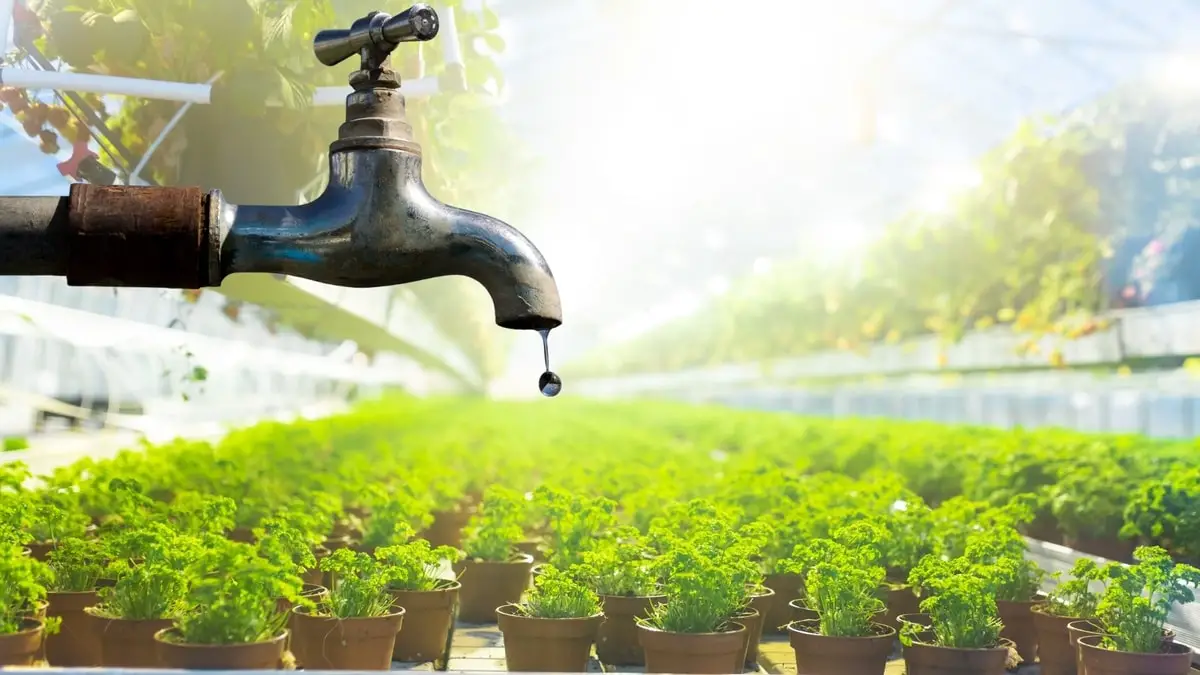Last Updated on October 20, 2022 by Griselda M.
Chlorine is widely used for the treatment of tap water but it is important to dechlorinate your water before using it in your aquaponics system. Adding chlorine helps disinfect your water from disease-causing bacteria and is easy to remove from water afterward. If you are thinking of using tap water for your aquaponics system, you would want to remove and neutralize chlorine before adding it to your system.
In this article, we will be discussing exactly how to dechlorinate water, but first, let us understand why we don’t want chlorine in our aquaponics water.
Does Chlorine Harm Your Fish and Plants?
Chlorine disrupts the natural cycle of nutrients in your aquaponics water
Chlorine has antibacterial properties which makes it useful for disinfecting water. Your aquaponics system relies heavily on natural bacteria for nitrogen fixation and conversion of nutrients. Thus having chlorine in your aquaponics water will disrupt the nutrient cycle in your system.
Chlorine is extremely toxic to fish
The effects of chlorine on fish have been well studied over the years. Whether in aquaculture, aquariums, or natural habitats, chlorine is toxic to fish. Chlorine concentrations of 0.2-0.3 ppm are deadly for fish in general, although different species will vary in the threshold.
Signs of chlorine affecting your fish would include hypoxia and gill necrosis. Chlorine directly attacks living tissues by displacing oxygen making it hard for your fish to breathe.
Chlorine is a micronutrient to plants but excessive amounts will cause tip burns!
In small amounts, chlorine assists in plant respiratory and immune functions. According to research, onion and cotton grew better with small amounts of chlorine compared to chlorine-deficient soil. Though in higher chlorine concentrations, it accumulates in leaf tissues and causes tip burn.
Learn more about: Does Ammonia Kill Plants
Although chlorine is a useful element for plants, US EPA standards require a concentration of 0.2 ppm in tap water. This concentration is too high for use in aquaponics and thus tap water requires dechlorination before adding into an aquaponics system.
How To Neutralize Chlorine Before Adding To Aquaponics?
Do not dechlorinate your aquaponics water with these methods
There are several ways to dechlorinate tap water for safe use in aquaponics. As a practitioner of aquaponics, you are integrating aquaculture and hydroponics. Not all methods of dechlorination are safe for aquaponics. Although they are used in aquaculture or hydroponics these methods are not safe for your system;
1. Sodium Thiosulfate
It is used for dechlorination by the US EPA. This could also be used for several aquaculture or aquarium practices. Sodium is harmful to your hydroponics system and could potentially kill your plants. Chlorine and Sodium both cause osmotic stress for your plant’s roots hindering the uptake and storage of water.
2. Vitamin C has two forms; Sodium Ascorbate or Ascorbic Acid.
These forms are widely used for dechlorination. Though they are both used to dechlorinate wastewater, it is not advisable to use Sodium Ascorbate for aquaponics. As previously discussed, sodium is harmful to plants due to osmotic stress.
Although Vitamin C degrades naturally in the water, Sodium as a metal is difficult to remove. Ascorbic acid on the other hand benefits both your plant and fish and has been widely used in agricultural operations.
So, What Neutralizes Chlorine In Tap Water For Aquaponics?
Now that we have discussed what to avoid using for your aquaponics system, we will go over safer ways to dechlorinate your tap water before adding it to your aquaponics system. Since we are dealing with chlorinated tap water, we will be making assumptions from the maximum allowable concentration of chlorine and chloramine at 4ppm or 4 mg per Liter.
-
Passive Dechlorination Allows For Chlorine To Naturally Evaporate Into The Atmosphere
As chlorine is a naturally occurring gas, it will neutralize itself into the atmosphere as chlorine gas, Cl2. This will take time and will depend on the surface area of your container and the temperature. A higher temperature will allow for the chlorine to volatilize at a faster rate. Passive evaporation of chlorine could take anywhere from 1 day to 4 days depending on the amount in your tap water.
-
Mechanical Aeration and Circulating Saturates Your Water With Air, Speeding Up The Evaporation Of Chlorine
I personally choose to aerate my water with air stones to dechlorinate water for a day. Increasing the interaction of water with air allows for chlorine in the water to evaporate faster. According to research, distilled water with a chlorine concentration of 200ppm dropped to 0 ppm in 6 minutes with an airflow of 9L per minute.
This research was done under a lab setup; artificially infusing chlorine gas into distilled water. The experimental setup was done in a container with a diameter of 20 cm and a height of 1 meter. They used an air sparger to collect the vapors and measure the amount of chlorine still detectable.
Although this research is promising, more research has to be done to come up with a conclusive solution to the rate of dechlorination through aeration.
-
Sunlight and UV Will Also Cause Chlorine To Evaporate At A Faster Rate
Using UV light for dechlorination has been applied in the food and pharmaceutical industry with great results. This neutralizes both chlorine and chloramine in the water, as well as bacteria and fungi. Sunlight contains UV rays as well, thus direct exposure to sunlight facilitates dechlorination. A couple of hours under the sun would be enough to dechlorinate your water while not losing too much water to evaporation.

Learn more about: How To Fix Hard Water In Fish Tank
How Much Vitamin C To Dechlorinate Water?
Vitamin C chlorine removal is easy to do yourself. Vitamin C is an essential component of plant growth. As ascorbic acid is a weak acid, it will not have any significant effect on your acidity. This will only last a short amount of time before your pH turns back to normal.
A ratio of 2.5 parts ascorbic acid per 1 part chlorine is a good approximation made by the US Department of Agriculture’s Forest Service. It is suggested to do this before adding to your system as the sudden change in pH although temporary might cause stress for plants.
Chlorine is important to keep our tap waters and pools safe from bacteria. Although exposure will cause toxicity for your fish and osmotic stress for your plants. There are multiple safe ways to dechlorinate tap water before use in aquaponics. Dechlorinating water is as simple as leaving the tap water out for a day or two before adding it into the system.
Learn more about: How Much Vinegar To Lower pH Of Water In Aquaponics-Should You Use It?

Candace is an aquaponics expert with over 5 years of experience in the field. She has a degree in environmental science from the University of California, Berkeley and a degree in aquaponics from the University of Florida. She is passionate about sustainable agriculture and has a deep knowledge of aquaculture and hydroponics. She has worked on numerous projects and has been involved in the development of aquaponic systems and fish farms. She also has experience in designing and constructing aquaponic systems. With her expertise, Candace is able to advise clients on the most effective and efficient way to construct and manage their aquaponic system. She is an active member of the aquaponic community, often speaking at conferences and seminars. Candace is dedicated to helping others understand the importance of aquaponics, and she is a strong advocate for sustainable food production.



